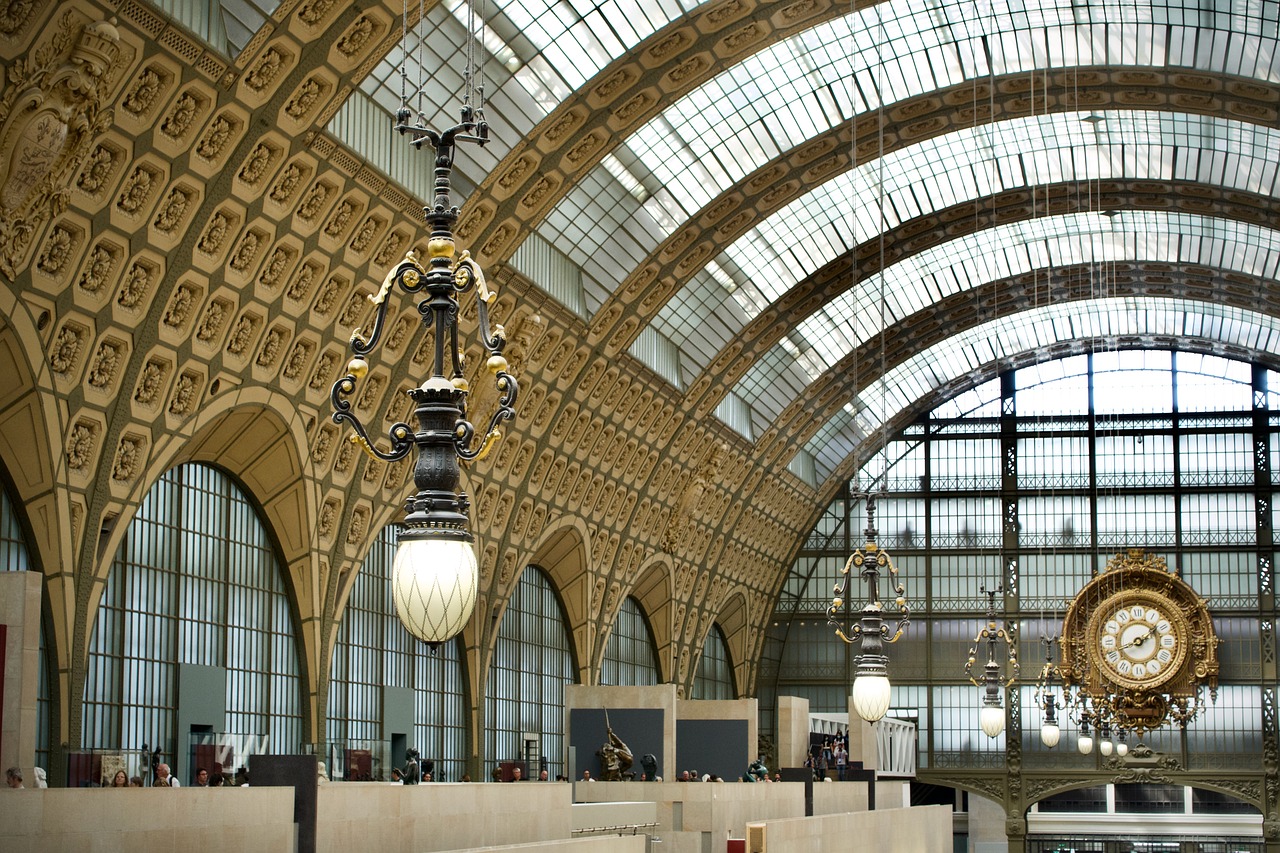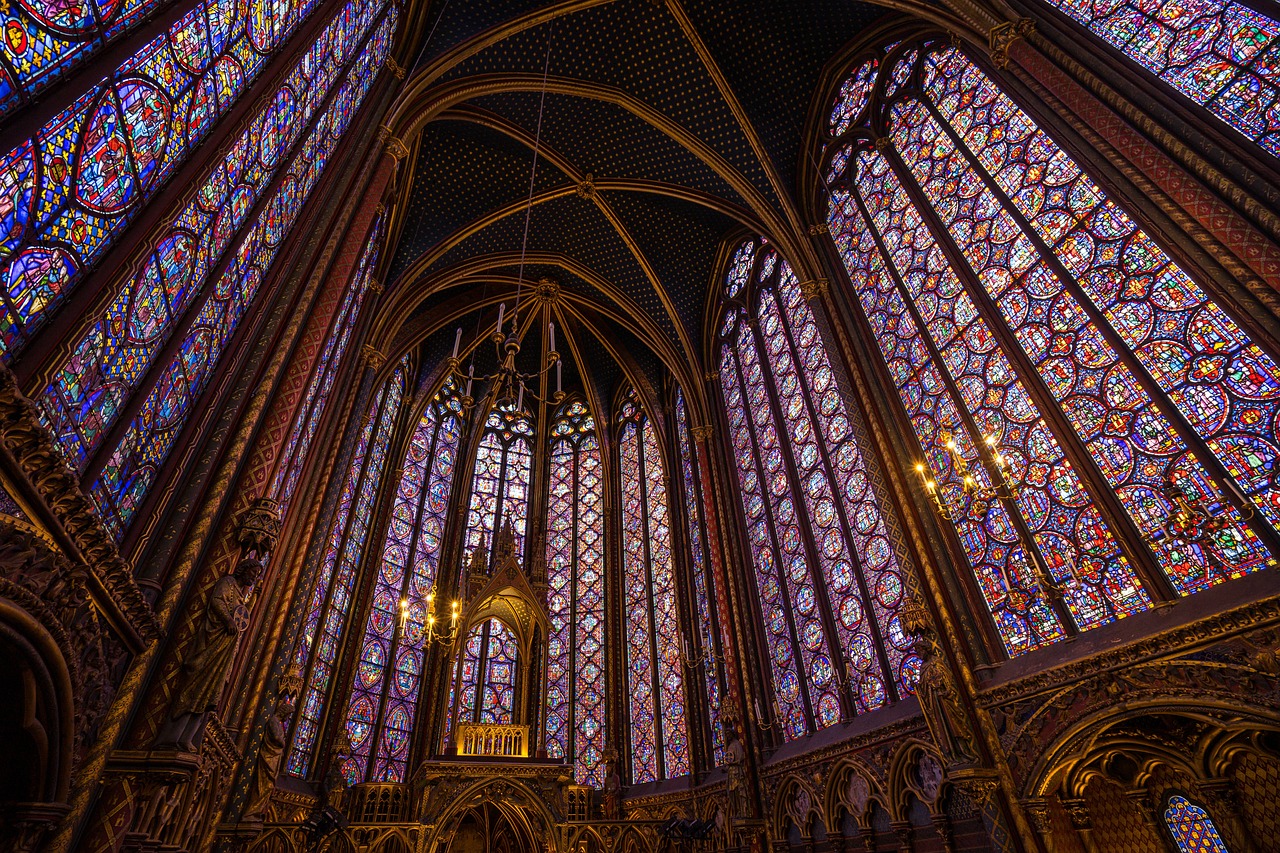The Power of Monochromatic Paintings
Monochromatic paintings possess a unique charm that captivates both the eye and the soul. By focusing on a single color, artists create a spectrum of shades, tones, and intensities that can evoke a wide array of emotions. Imagine walking into a room adorned with a stunning monochromatic piece; the way it draws you in, inviting you to explore its depths, is nothing short of magical. This art form is not merely about color; it’s about the emotional resonance it creates and the atmosphere it cultivates in a space.
At its core, monochromatic art is a celebration of simplicity. It strips away the distractions of multiple colors, allowing the viewer to focus on the nuances of a single hue. This approach can transform how we perceive art, encouraging a deeper connection with the work itself. Whether it's the calming blues of a serene seascape or the fiery reds of an abstract expression, the emotional impact of these paintings can be profound.
Moreover, monochromatic paintings can serve as powerful statements in interior design. They can enhance the aesthetic appeal of a space, creating a cohesive look that ties together various elements of decor. In a world filled with noise and chaos, these artworks offer a moment of clarity and peace. They invite us to pause, reflect, and appreciate the beauty of simplicity.
In the following sections, we will delve deeper into the historical significance of monochromatic paintings, explore the influential artists who have shaped this genre, and discuss how these artworks can be effectively integrated into modern interior design. So, whether you're an art enthusiast, a homeowner looking to revamp your space, or simply curious about the emotional power of color, this exploration of monochromatic paintings is sure to enlighten and inspire.
Monochromatic art focuses on a single color and its variations, creating depth and intrigue. This section delves into the definition and fundamental principles behind this captivating art form.
Understanding the historical evolution of monochromatic paintings reveals their significance in various art movements. This section highlights key periods and artists who embraced this style, shaping its narrative.
From Yves Klein to Kazimir Malevich, several artists have made significant contributions to monochromatic painting. This subheading examines their unique approaches and the impact of their work on the art community.
Yves Klein's use of International Klein Blue redefined monochromatic art. This section discusses his philosophy and how his bold color choices influenced contemporary art.
Kazimir Malevich's Suprematism emphasized simplicity and abstraction. Here, we explore how his monochromatic works challenged traditional perceptions of art and paved the way for modernism.
Monochromatic paintings evoke specific emotions and moods through color. This section analyzes how different hues affect viewers' feelings and perceptions, enhancing the artwork's overall impact.
Monochromatic paintings are not just for galleries; they also play a role in interior design. This section discusses how these artworks can enhance home aesthetics and create cohesive spaces.
Using monochromatic art as a focal point can transform a room. This subheading provides tips on selecting the right piece to complement your decor and elevate the space.
Integrating monochromatic paintings with other design elements requires balance. This section offers insights on how to harmonize colors and textures for a cohesive interior design scheme.
- What is monochromatic art? Monochromatic art focuses on a single color and its variations, exploring the emotional and aesthetic depths of that color.
- How can monochromatic paintings affect a room's atmosphere? They can create a cohesive and calming environment, drawing attention and enhancing the overall aesthetic.
- Who are some notable artists known for monochromatic works? Notable artists include Yves Klein and Kazimir Malevich, who have significantly influenced the genre.
- Can monochromatic art be used in modern interior design? Absolutely! Monochromatic paintings can serve as striking focal points and help create harmonious spaces.

The Essence of Monochromatic Art
Monochromatic art is a fascinating exploration of color, focusing exclusively on variations of a single hue. This captivating art form invites viewers to dive deep into the nuances of a color, revealing its emotional depth and aesthetic allure. Imagine walking into a room where every shade of blue—from the softest sky to the deepest navy—envelops you in a serene embrace. That’s the magic of monochromatic paintings; they create a visual journey that transcends the ordinary.
The fundamental principle behind monochromatic art lies in its simplicity. By utilizing different tints, tones, and shades of one color, artists can evoke a wide range of feelings and moods. For instance, a painting that explores the warmth of red might stir feelings of passion and energy, while a work dominated by green could evoke tranquility and renewal. This singular focus allows for a more profound connection between the viewer and the artwork, as the subtleties of the chosen color come to life.
In the realm of monochromatic art, the use of light and shadow plays a crucial role. Artists skillfully manipulate these elements to create depth and dimension, making the artwork feel almost three-dimensional. The interplay of light and dark within a single color can transform a flat surface into a dynamic visual experience. This technique not only enhances the aesthetic quality of the painting but also deepens the emotional resonance it holds for viewers.
Moreover, monochromatic art is not merely about color; it’s also about the *intent* behind the creation. Artists often choose a color that reflects their personal experiences, beliefs, or emotions. This choice adds layers of meaning to the artwork, inviting viewers to interpret the piece through their own lenses. When you stand before a monochromatic painting, you’re not just looking at a color; you’re engaging with the artist’s narrative, their emotions, and their unique perspective on the world.
To further illustrate the essence of monochromatic art, consider the following aspects:
- Emotional Connection: Monochromatic works often resonate on a personal level, allowing viewers to connect with their own feelings and experiences.
- Visual Harmony: The use of a single color creates a sense of unity and cohesion within the artwork, making it visually striking.
- Focus on Form: Without the distraction of multiple colors, the viewer's attention is drawn to the shapes and forms within the piece.
In conclusion, the essence of monochromatic art lies in its ability to distill the complexities of color into a singular experience that captivates and inspires. It challenges our perceptions and invites us to explore the emotional landscapes that a single hue can unveil. Whether you’re an artist or an admirer, embracing monochromatic art opens up a world of possibilities, encouraging a deeper understanding of color and its profound impact on our senses.

Historical Context
To truly appreciate the allure of monochromatic paintings, we must journey through their rich historical landscape. These artworks have not only captivated audiences but have also played a pivotal role in the evolution of various art movements. Monochromatic art, which emphasizes a single color and its shades, has roots that intertwine with significant periods in history, each contributing to its narrative. From the early explorations of color in the Renaissance to the radical shifts of the 20th century, monochromatic paintings have continually challenged our perceptions and expectations.
In the Renaissance, artists began to explore the emotional and symbolic significance of color. While this period is often celebrated for its vibrant palettes, it laid the groundwork for later artists to experiment with color in more profound ways. Fast forward to the 20th century, and we see a dramatic shift where artists like Yves Klein and Kazimir Malevich began to strip away the complexities of color, focusing instead on the power of a singular hue. This shift was not just about aesthetics; it was a philosophical statement about the nature of art itself.
During the Abstract Expressionism movement, monochromatic paintings emerged as a means of exploring the depths of human emotion and experience. Artists sought to convey feelings through limited color palettes, allowing viewers to engage with the artwork on a more visceral level. The significance of monochromatic art is often underscored by its ability to evoke introspection and reflection. This is where the emotional weight of a single color can resonate deeply, allowing for personal interpretations and connections.
Here’s a brief overview of key periods and their contributions to monochromatic art:
| Period | Key Contributors | Significance |
|---|---|---|
| Renaissance | Leonardo da Vinci, Michelangelo | Exploration of color symbolism and emotional depth. |
| Modernism | Pablo Picasso, Henri Matisse | Breaking traditional boundaries, leading to new interpretations of color. |
| Abstract Expressionism | Mark Rothko, Barnett Newman | Focus on emotive power of color, often through monochromatic works. |
| Contemporary | Yves Klein, Kazimir Malevich | Redefining art through singular colors, emphasizing philosophical concepts. |
As we delve deeper into the contributions of influential artists, we can see how their unique approaches have shaped the narrative of monochromatic art. They have not only pushed boundaries but have also inspired future generations to explore the depths of color and emotion in their works. Monochromatic paintings, with their rich historical context, continue to challenge and inspire, inviting viewers to explore the profound connections between color, emotion, and perception.
- What is monochromatic painting? Monochromatic painting focuses on a single color and its variations, creating depth and intrigue.
- Who are some key artists associated with monochromatic art? Influential artists include Yves Klein, Kazimir Malevich, and Mark Rothko.
- How does color affect emotions in monochromatic paintings? Different hues can evoke specific emotions, enhancing the overall impact of the artwork.

Influential Artists
When we dive into the world of monochromatic painting, we can't help but encounter a handful of visionaries who have left an indelible mark on this art form. These artists didn't just play with shades; they transformed the very fabric of how we perceive color and emotion in art. Let's take a closer look at some of these influential figures who dared to embrace the simplicity and depth of monochromatic palettes.
One of the most notable artists in this realm is Yves Klein, who famously championed a unique shade of blue known as International Klein Blue (IKB). Klein believed that color could transcend physical reality, and his works often evoke a sense of the infinite. His philosophy revolved around the idea that color could elicit profound emotional responses, allowing viewers to connect with the artwork on a spiritual level. Klein's bold use of blue not only defined his career but also influenced countless artists who followed in his footsteps.
Another titan of monochromatic art is Kazimir Malevich, the father of Suprematism. Malevich's approach to monochromatic painting was revolutionary; he stripped away the complexities of representational art to focus purely on color and form. His iconic work, Black Square, challenged traditional artistic conventions and invited viewers to reconsider their perceptions of art itself. Malevich believed that a simple black square could convey profound meaning, suggesting that art could exist beyond the constraints of the visible world.
These artists, among others, have paved the way for a deeper understanding of monochromatic art. Their unique approaches not only highlight the potential of a single color but also challenge us to explore our emotional responses to art. As we reflect on their contributions, we see how monochromatic paintings can serve as a powerful medium for expression, evoking a spectrum of feelings from tranquility to turmoil.
In summary, the legacy of these influential artists is not just about their individual works; it's about how they have shaped the conversation around color and emotion in the art world. Their daring explorations remind us that sometimes, less is indeed more, and that a single hue can tell a story as rich and complex as a vibrant canvas filled with myriad colors.
- What is monochromatic art?
Monochromatic art focuses on a single color and its various shades, tints, and tones, creating depth and emotional resonance.
- Who are the key figures in monochromatic painting?
Notable artists include Yves Klein and Kazimir Malevich, both of whom made significant contributions to the genre.
- How does monochromatic art affect emotions?
Different colors can evoke specific feelings; for example, blue can create a sense of calmness, while red might evoke passion or intensity.
- Can monochromatic paintings be used in interior design?
Absolutely! Monochromatic artworks can enhance home aesthetics and create cohesive spaces by serving as focal points or harmonizing with other design elements.

Yves Klein's Blue Period
Yves Klein, a pioneering figure in the world of monochromatic art, is best known for his revolutionary use of a single color—blue. His creation of International Klein Blue (IKB) was not just a color choice; it was a profound statement that transformed the landscape of modern art. Klein believed that color could evoke deep emotional responses, and through his bold application of blue, he sought to capture the essence of the sky and the sea, creating a sense of infinity and transcendence.
During his Blue Period, which spanned the late 1940s to the early 1960s, Klein produced a remarkable body of work that included paintings, sculptures, and even performances. His approach was deeply philosophical, as he aimed to express the immaterial and the spiritual through his art. Klein once stated, "Blue has no dimensions. It is beyond dimensions," highlighting his desire to convey a feeling rather than a physical form.
The emotional impact of Klein's blue is undeniable. Viewers often describe feelings of calmness, serenity, and even melancholy when encountering his work. This is largely due to the psychological effects of color, which can influence our mood and perception. Klein's paintings invite the viewer into a meditative state, encouraging introspection and reflection.
One of the most iconic pieces from this period is “Blue Monochrome”, where the entire canvas is drenched in a rich, vibrant blue. This work is not merely about aesthetics; it is an exploration of the relationship between color and human emotion. Klein's use of blue transcends the visual, aiming to evoke a spiritual experience that resonates on a deeper level.
Interestingly, Klein's work was not limited to traditional canvases. He famously incorporated his blue into various media, including sculptures and performance art. His “Anthropometries” involved models who were covered in blue paint and pressed against canvases, creating unique impressions that reflected the human form. This innovative technique not only showcased his signature color but also blurred the lines between the artist and the artwork, emphasizing the act of creation itself.
In summary, Yves Klein's Blue Period represents a significant chapter in the narrative of monochromatic art. His exploration of color and emotion redefined how we perceive art and its impact on our psyche. Klein's legacy continues to inspire artists and art lovers alike, reminding us of the profound connection between color and human experience.
- What is International Klein Blue?
International Klein Blue (IKB) is a deep, vibrant blue color created by Yves Klein, which he used extensively in his artwork to evoke emotional and spiritual responses.
- How did Yves Klein influence modern art?
Klein's innovative use of color and his exploration of performance art challenged traditional boundaries, paving the way for future movements such as Minimalism and Conceptual Art.
- What themes did Klein explore in his Blue Period?
Klein explored themes of spirituality, infinity, and the emotional impact of color, aiming to create a meditative experience for the viewer.

Kazimir Malevich and Suprematism
Kazimir Malevich, a name synonymous with the revolutionary art movement known as Suprematism, was a pioneer who reshaped the landscape of modern art. Born in 1879 in what is now Ukraine, Malevich's journey into the world of art was marked by a profound desire to break away from the constraints of traditional representation. He believed that art should focus on the pure expression of feeling and thought, which he achieved through the use of simple geometric forms and a limited color palette. This philosophy culminated in his groundbreaking work, particularly his iconic painting, Black Square, which challenged the very essence of what art could be.
Suprematism, as articulated by Malevich, was not just an artistic style but a manifesto for a new way of seeing the world. It emphasized the supremacy of color and form over the depiction of objects, allowing viewers to engage with art on a deeper, more emotional level. Malevich's works often featured bold, monochromatic colors, which he believed could evoke feelings without the distraction of representational imagery. This approach was revolutionary, as it paved the way for future movements such as Minimalism and Abstract Expressionism.
One of the key tenets of Suprematism was the idea that color could convey profound meaning and emotion. Malevich used a limited palette to explore the relationships between colors, creating a sense of harmony and tension. For example, his use of white against black in Black Square was not merely a stylistic choice; it was a deliberate exploration of the void and the infinite possibilities that lie within it. Malevich's works encourage viewers to experience the artwork rather than merely observe it, inviting them to engage with their own emotions and interpretations.
Moreover, Malevich's influence extended beyond the canvas. His ideas about art and abstraction permeated architecture, design, and even politics, as he sought to inspire a new cultural identity in post-revolutionary Russia. His teachings and philosophies were instrumental in shaping the direction of modern art, making him a pivotal figure in the narrative of 20th-century creativity. Artists who followed in his footsteps, such as El Lissitzky and Alexander Rodchenko, continued to explore the principles of Suprematism, further solidifying its importance in the art world.
In conclusion, Kazimir Malevich's contributions to the field of monochromatic painting and Suprematism cannot be overstated. His radical approach to color and form transformed our understanding of art, inviting us to look beyond the surface and engage with the emotional depths of the human experience. Malevich's legacy lives on, reminding us that art is not just about what we see, but about how it makes us feel.
- What is Suprematism?
Suprematism is an art movement founded by Kazimir Malevich that emphasizes the supremacy of pure artistic feeling over the depiction of objects. It focuses on basic geometric forms and limited color palettes. - How did Kazimir Malevich influence modern art?
Malevich's emphasis on abstraction and the emotional power of color laid the groundwork for many modern art movements, including Minimalism and Abstract Expressionism. - What is the significance of the painting "Black Square"?
"Black Square" is a seminal work in art history that challenges traditional notions of representation and invites viewers to engage with the concept of nothingness and the infinite.

Emotional Impact of Color
Color is not just a visual experience; it’s an emotional journey. When we gaze at a monochromatic painting, we are often drawn into a world of feelings that the artist has carefully crafted through their choice of hue. Different colors can evoke a myriad of emotions, and monochromatic art amplifies this effect by focusing on a single color's variations. For instance, a deep blue can instill a sense of calm, while a vibrant red can spark feelings of passion or urgency. This emotional resonance is what makes monochromatic paintings so compelling.
Imagine walking into a room adorned with a stunning monochromatic piece. The color envelops you, creating an atmosphere that can be both soothing and invigorating. The emotional impact of color can be categorized into several psychological responses, which are often universal. Here’s a brief look at how different colors can affect our emotions:
| Color | Emotional Response |
|---|---|
| Red | Passion, Energy, Urgency |
| Blue | Calmness, Trust, Sadness |
| Yellow | Happiness, Optimism, Caution |
| Green | Growth, Harmony, Refreshment |
| Purple | Luxury, Creativity, Mystery |
As you can see from the table, each color carries its own weight of emotional significance. Artists who work with monochromatic palettes often choose their colors purposefully, knowing that the right shade can evoke specific feelings in the viewer. For example, Yves Klein's use of International Klein Blue was not merely an aesthetic choice; it was an intentional effort to elicit feelings of tranquility and depth. His work invites viewers to immerse themselves in the sheer essence of blue, creating an almost meditative experience.
Moreover, the emotional impact of color can also vary based on context. In a gallery setting, a vibrant red painting might stir feelings of excitement, while the same color in a more subdued environment could convey aggression or tension. This dynamic nature of color means that artists and designers must consider not just the colors they choose, but also how those colors will interact with the surrounding space and light.
In conclusion, the emotional impact of color in monochromatic paintings is profound. It shapes our perceptions and influences our feelings, making it a powerful tool for artists. Whether you’re an art lover or a casual observer, the next time you encounter a monochromatic piece, take a moment to reflect on how it makes you feel. What emotions does it stir within you? What memories or thoughts does it evoke? The answers may surprise you, revealing the hidden power of color in art.
- What is monochromatic art? Monochromatic art focuses on a single color and its variations, exploring the depth and nuances that can be achieved through that color.
- How does color influence emotions? Different colors can evoke specific feelings; for instance, blue often brings calmness, while red can incite passion.
- Can monochromatic paintings be used in interior design? Absolutely! Monochromatic paintings can enhance aesthetics and create cohesive spaces in home design.
- Who are some influential monochromatic artists? Notable artists include Yves Klein and Kazimir Malevich, both of whom made significant contributions to the monochromatic art movement.

Applications in Interior Design
Monochromatic paintings are not just confined to the walls of art galleries; they have found a significant place in the realm of interior design. Imagine walking into a room that feels both serene and sophisticated, where every element harmonizes effortlessly. This is the magic that monochromatic art can bring into your living space. By utilizing a single color in various shades, tones, and tints, you can create an atmosphere that is not only visually appealing but also emotionally resonant. The beauty of monochromatic art lies in its ability to evoke a sense of unity and calm, making it a perfect choice for any home.
One of the primary advantages of incorporating monochromatic paintings into interior design is their versatility. They can serve as stunning focal points or subtle background elements, depending on how they are integrated into the overall design scheme. For example, a large canvas featuring deep greens can provide a refreshing contrast against lighter wall colors, while a series of smaller pieces in varying shades can create a cohesive gallery wall that draws the eye. The key is to select artwork that complements your existing decor and enhances the overall aesthetic of the space.
To effectively use monochromatic paintings in your interior design, consider the following tips:
- Choose the Right Color: Select a color that resonates with the mood you want to create. For instance, blues can evoke tranquility, while reds can energize a space.
- Layering Textures: Combine different textures with your monochromatic art to add depth. Think about incorporating fabrics, furniture, and accessories that echo the same color palette.
- Consider Scale: The size of the artwork matters. A large monochromatic piece can dominate a room, while smaller pieces can be grouped to create visual interest without overwhelming the space.
Moreover, monochromatic paintings can be used to create a sense of flow between different areas of your home. For example, if you have an open floor plan, using a consistent color scheme with monochromatic art can help define spaces while maintaining a cohesive look. This connection can be achieved by using similar shades in adjacent rooms, making the transition feel seamless and intentional.
Another aspect to consider is the emotional impact of color in your space. Colors can influence our moods and perceptions, and monochromatic paintings can enhance this effect. For instance, a room adorned with warm yellows and oranges can create a welcoming and energetic environment, perfect for social gatherings. On the other hand, cool tones like greens and blues can foster a calming retreat, ideal for relaxation after a long day. By thoughtfully selecting your monochromatic artwork, you can tailor the emotional atmosphere of your home to suit your lifestyle.
In summary, the applications of monochromatic paintings in interior design are vast and varied. They can transform a mundane space into a captivating environment, enriching both the aesthetic and emotional experience of your home. Whether you choose to make a bold statement with a large piece or create a subtle backdrop with smaller works, monochromatic art offers endless possibilities for personal expression and design innovation.
1. What is monochromatic art?
Monochromatic art is a style that focuses on a single color and its various shades, tints, and tones. This approach allows for a rich exploration of depth and emotion within a unified color scheme.
2. How can I incorporate monochromatic paintings into my home?
You can incorporate monochromatic paintings by choosing pieces that complement your existing decor, using them as focal points or subtle accents, and ensuring that the color resonates with the mood you want to create in your space.
3. What emotions do different colors evoke?
Different colors can evoke various emotions; for example, blue can create a sense of calm, red can energize a space, and green can provide a refreshing feel. It's essential to consider these emotional impacts when selecting monochromatic art for your home.
4. Can monochromatic art work in any style of interior design?
Absolutely! Monochromatic art is incredibly versatile and can fit into various design styles, from modern and minimalist to traditional and eclectic. The key is to choose the right color and scale to match your design aesthetic.

Creating a Focal Point
When it comes to interior design, creating a focal point is crucial for establishing a cohesive and inviting atmosphere. Monochromatic paintings serve as a perfect centerpiece, drawing the eye and anchoring the room's aesthetic. Imagine walking into a space where a stunning piece of monochromatic art immediately captures your attention—it's like the heartbeat of the room, setting the tone for everything else. But how do you choose the right piece to complement your decor? Here are some essential tips to consider:
- Consider the Color Palette: Select a monochromatic painting that resonates with the existing color scheme of your room. For example, if your walls are painted in soft grays, a piece featuring varying shades of gray can create a harmonious balance.
- Size Matters: The size of the artwork should be proportionate to the space. A large canvas can dominate a small room, while a smaller piece may get lost in a spacious area. Always measure your wall space before making a purchase.
- Think About the Mood: Different hues evoke different feelings. A deep blue painting can instill a sense of calm, while a vibrant red can energize the space. Choose a color that aligns with the atmosphere you wish to create.
Additionally, consider the surrounding elements when placing your monochromatic art. For instance, if you have a minimalist decor style, a bold monochromatic piece can add depth without overwhelming the space. On the other hand, if your decor is rich in textures and patterns, a subtle monochromatic painting can provide a much-needed visual rest. Think of it as a well-composed meal; every ingredient has its role, and the monochromatic painting acts as the main dish, complemented by the sides of furniture and decor.
Lighting also plays a significant role in showcasing your artwork. Natural light can enhance the colors and textures of the painting, while strategically placed artificial lights can create dramatic shadows and highlights. Experiment with different lighting options to see how they affect the painting's appearance throughout the day. Remember, the right lighting can transform a simple monochromatic piece into a stunning visual experience.
Finally, don’t underestimate the power of framing. A well-chosen frame can elevate a monochromatic painting, adding sophistication and polish. Whether you opt for a sleek modern frame or a more ornate style, the frame should complement both the artwork and the overall design of the room. Think of it as the icing on the cake—essential for pulling everything together.
In conclusion, creating a focal point with monochromatic paintings is all about balance, proportion, and harmony. By thoughtfully selecting a piece that resonates with your space and considering elements like color, size, mood, lighting, and framing, you can transform your room into a visually stunning environment that invites conversation and admiration.

Balancing with Other Elements
Integrating monochromatic paintings into your interior design is not just about hanging a piece of art on the wall; it's about creating a harmonious environment that speaks to your personal style and enhances the overall aesthetic of your space. Achieving this balance requires a keen eye and a thoughtful approach. Imagine your room as a canvas itself, where every element plays a crucial role in the final masterpiece. When you introduce a monochromatic painting, you need to consider how it interacts with the other components in the room.
One effective strategy is to think about the color palette of the room. If your painting features deep blues, for instance, consider incorporating various shades of blue through your furnishings, such as cushions, throws, or even a rug. This not only ties the room together but also creates a sense of unity. Additionally, you might want to balance the intensity of the monochromatic piece with lighter elements. A room that is too saturated with color can feel overwhelming, so introducing neutral tones can help to soften the overall look.
Texture is another vital aspect to consider. When you have a bold monochromatic painting, it can be beneficial to introduce different textures into the space. For example, if your painting has a smooth finish, you might want to add a soft, plush rug or textured fabrics in your upholstery. This contrast can create a dynamic visual interest, making the painting stand out even more while ensuring that the room feels inviting and comfortable.
Moreover, lighting plays a pivotal role in how your monochromatic artwork is perceived. Natural light can bring out the nuances in your painting, while strategically placed lamps can highlight specific areas, enhancing the overall ambiance of the room. Consider using adjustable lighting to change the mood as needed. For instance, a warm glow can make the space feel cozy in the evening, while brighter lights can energize the area during the day.
Finally, remember that balance is also about scale. A large monochromatic painting can dominate a small room, making it feel cramped. Conversely, a tiny piece in a vast space might get lost. Assess the dimensions of your artwork in relation to your furniture and overall room size. You want your painting to be a focal point, but not at the expense of the room's functionality and flow.
In conclusion, balancing monochromatic paintings with other design elements is an art in itself. By considering color, texture, lighting, and scale, you can create a cohesive and visually stunning environment that not only showcases your artwork but also reflects your unique style.
- What is monochromatic art? Monochromatic art uses variations of a single color to create depth and interest.
- How can I incorporate monochromatic paintings into my home? Consider the color palette, texture, lighting, and scale of your space to create a harmonious look.
- What emotions do monochromatic paintings evoke? Different hues can evoke various emotions, influencing the mood of the viewer and the overall ambiance of the room.
- Can monochromatic art suit any interior style? Yes, monochromatic paintings can complement a wide range of styles, from modern to traditional, depending on how they are integrated into the design.
Frequently Asked Questions
- What are monochromatic paintings?
Monochromatic paintings are artworks that utilize a single color and its variations. This style explores the depth and nuances of that color, creating a unique visual experience. It's like diving into a deep ocean of one hue, where every shade tells a different story.
- What is the significance of monochromatic art in history?
Monochromatic art has played a crucial role in various art movements, influencing how artists perceive and express their ideas. From the bold statements of Yves Klein to the abstract simplicity of Kazimir Malevich, these artists have shaped the narrative of modern art through their innovative approaches to color.
- How do colors in monochromatic paintings affect emotions?
Colors have a profound impact on our emotions. For instance, a deep blue can evoke calmness, while a vibrant red might stir passion. Monochromatic paintings amplify these feelings by focusing on a single color, allowing viewers to connect more deeply with the artwork and the emotions it conveys.
- Can monochromatic paintings be used in interior design?
Absolutely! Monochromatic paintings can enhance home aesthetics by creating a cohesive look. They serve as striking focal points, bringing a sense of harmony and sophistication to any space. Think of them as the cherry on top of your interior design sundae!
- How can I choose the right monochromatic painting for my space?
When selecting a monochromatic painting, consider the existing color palette of your room. Look for a piece that complements or contrasts beautifully with your decor. It’s like finding the perfect outfit that makes you feel confident and stylish!
- What are some tips for balancing monochromatic art with other design elements?
To create balance, mix textures and incorporate varying shades of the same color throughout your space. This approach helps to tie everything together, making your room feel cohesive and inviting. Think of it as orchestrating a symphony where every note plays harmoniously!



















